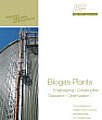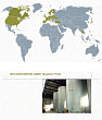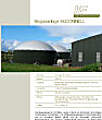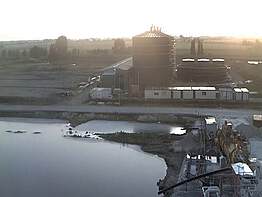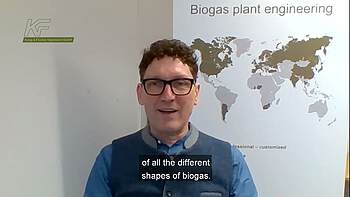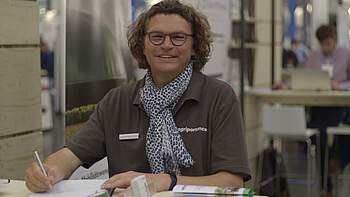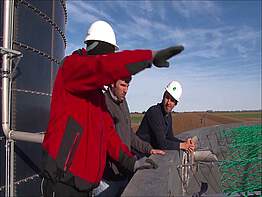Tailor-made biogas plant
Krieg & Fischer Ingenieure GmbH
Krieg & Fischer operate independently of subcontractors and can develop and implement the best technical and economical solution for your application. We place emphasis on the fact that there is no specific K&F procedure. Here we primarily focus on the input material and the conditions on site. This is the only way to develop an optimized system for your biogas plant.
Methanation
Bio SNG from biogas plants
„Currently, our renewable electricity production is limited during periods of low demand. Instead of shutting off wind and solar plants, we can convert this excess energy into gases that can be stored and used flexibly. By this, we can increase the share of renewable energies in our overall energy supply.” Tobias Eckhof, Project manager ‚Hydrogen‘ at Krieg & Fischer Ingenieure, evaluates this key technology.
Synthetic natural gas (SNG) is methane produced from biogenic carbon dioxide and hydrogen. This green and emission-free alternative is produced using the power-to-gas process. It is of natural gas quality and can be used like natural gas or fed into the gas grid. By linking the energy sectors of electricity, heat, mobility and industry (energy sector coupling), synergies are efficiently exploited.
This sustainable technology strengthens the economy and contributes to the achievement of climate targets.
From technology consulting and concept development, studies and approval procedures to plant planning and commissioning; Krieg & Fischer Ingenieure GmbH supports both the realization of new power-to-gas plants and the expansion of existing plants with its know-how.
Part of vector graphics used in this video is Designed by Freepik
Biogas plant DINTELOORD
Construction of a biogas plant in fast motion
Experience the construction of the Dinteloord biogas plant in fast motion. Operated by SUIKER UNIE GREEN ENERGY, this plant converts residues from the sugar industry and vegetable waste into 18.4 million m³ of biogas per year, which is upgraded to natural gas quality. As the largest biomethane producer in the Netherlands, Dinteloord stands for innovative and sustainable energy production.
Biogas plant DINTELOORD
From sugar beat to biogas
The owner and operator of the biogas plant is SUIKER UNIE GREEN ENERGY. In the biogas plant with an annual biogas production of 18.4 million m³ per year, residues from the sugar industry and vegetable waste are used. In the gas treatment by means of pressure water washing (DWW), the resulting biogas is treated to natural gas quality. This makes the biogas plant the largest biomethane producer in the Netherlands.
Fermentation of sugar beets
Successful for 10 years
An interview with Andreas Krieg on the advantages of fermenting sugar beet waste (sugar beet pulp) year-round in biogas plants as a solution for energy generation and CO2 compensation for the sugar industry. Surplus CNG is fed into the natural gas network, while fermentation residues are used as fertilizer.
IFAT 2022
Interview with Raphael Thies
"Krieg & Fischer Ingenieure GmbH is a planning office with more than 30 years of experience in the design and construction of biogas plants. We offer our services worldwide and are pleased to be able to talk directly to our international customers here at IFAT."
Biogas plant BELGOROD
Energy from waste
Energy from waste - a biogas plant for Russia. Built in 2011 by Krieg & Fischer Ingenieure GmbH and the video was broadcast on “Deutschland Welle” on 10.04.2013. The BELGOROD waste fermentation plant was put into operation in 2012 and uses slaughterhouse waste, maize silage and sewage sludge, among other things.
First Argentinean agricultural biogas plant
Rio Cuarto 1
The first biogas plant in Argentina using energy crops is in operation since 2014. Already in 2017/2018 the biogas plant was extended. An additional digester and a second gas engine was added. The reason was that on top of the energy crops and manure, thin stillage and material from ethanol production are used as input substrate.

